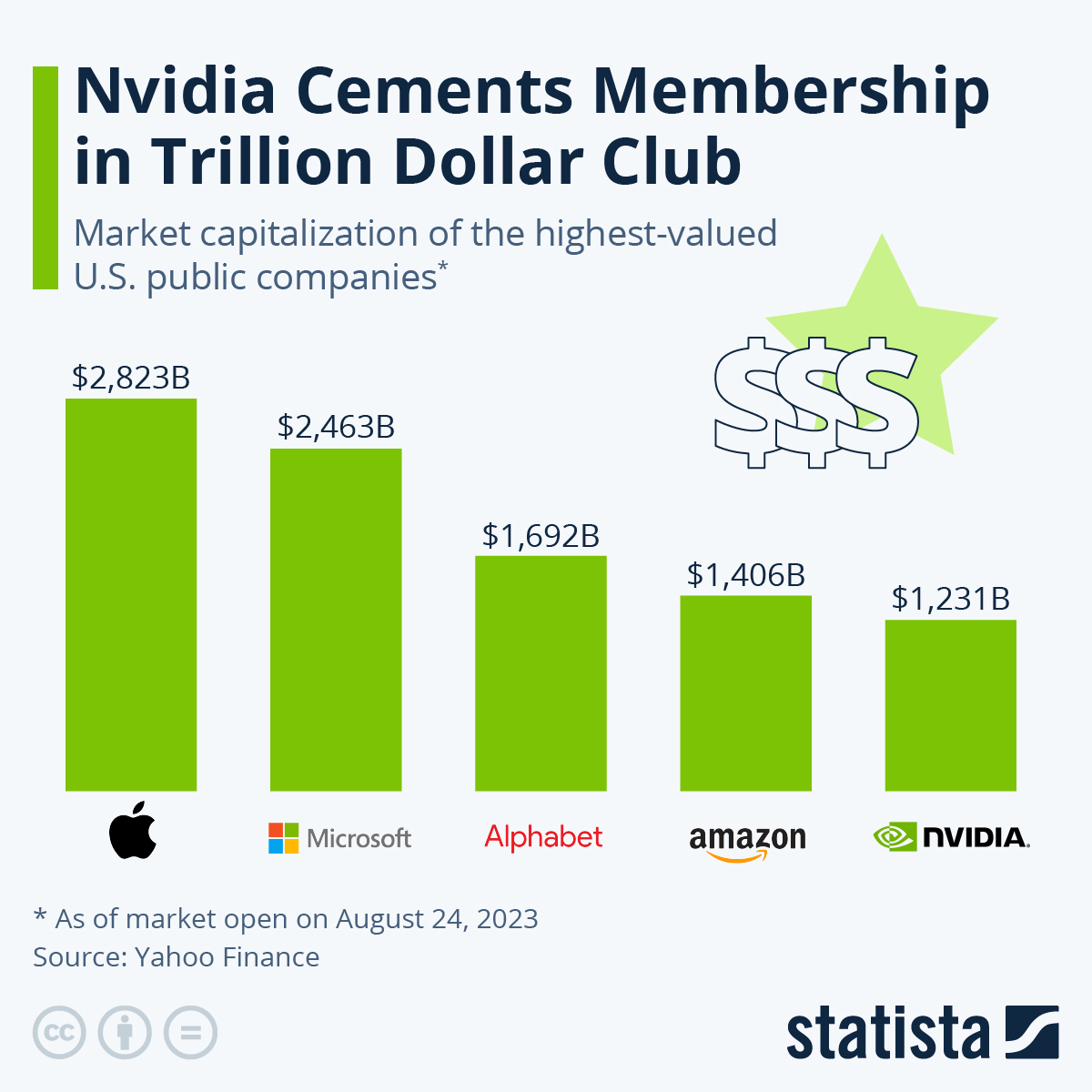Nvidia's Global Challenges: A Deeper Dive Than China

Table of Contents
Geopolitical Risks and International Trade Tensions
Escalating US-China relations pose a significant threat to Nvidia's global operations. The ongoing trade war and the implementation of export controls on advanced semiconductor technology create considerable uncertainty. This uncertainty impacts Nvidia's ability to operate freely in both the US and Chinese markets, two of its most important regions.
- Impact of US-China Tensions: Nvidia's high-performance computing (HPC) chips, crucial for AI development and supercomputing, are increasingly subject to export restrictions. This limits Nvidia's ability to supply these crucial components to Chinese customers, impacting its revenue streams and market share in a key region.
- Implications of Export Controls and Sanctions: The potential for future sanctions or stricter export controls poses a significant risk to Nvidia's business. Such measures could severely restrict Nvidia's ability to sell its most advanced chips to various international markets, impacting revenue and potentially hindering technological advancements.
- Broader International Trade Disputes: Beyond the US-China dynamic, broader international trade disputes and protectionist policies can disrupt Nvidia's global supply chains and limit market access. Tariffs and trade barriers increase the cost of doing business and reduce the predictability of the market.
- National Security Concerns: Growing national security concerns regarding the use of AI technology are shaping regulatory environments worldwide. Governments are increasingly scrutinizing the applications of AI and HPC technologies, leading to stricter regulations that could impact Nvidia's operations and product development.
Intensifying Competition and Market Saturation
Nvidia faces increasing competition from established players like AMD and Intel, as well as emerging competitors in the GPU market. This intensifies the pressure on pricing and market share.
- Growing Competition from AMD and Intel: AMD has made significant strides in GPU technology, narrowing the performance gap with Nvidia's offerings. Intel, a long-time competitor in the CPU market, is also aggressively entering the GPU space, further intensifying the competition.
- Potential for Price Wars: The intensified competition increases the likelihood of price wars, which could negatively impact Nvidia's profitability margins and overall financial performance. Maintaining profitability while facing aggressive pricing strategies is a major challenge.
- Market Saturation in High-End GPUs: The high-end GPU market is showing signs of saturation, making it increasingly difficult for Nvidia to maintain its high growth rates. Finding new market segments and applications for its technology is vital for sustained success.
- Emergence of New Players and Disruptive Technologies: The emergence of new players with innovative technologies and business models poses a further threat to Nvidia's market dominance. Staying ahead of the curve through continuous R&D and strategic acquisitions is crucial for Nvidia's long-term viability.
Supply Chain Vulnerabilities and Resource Constraints
Nvidia's highly complex supply chain is vulnerable to disruptions caused by global semiconductor shortages, geopolitical instability, and resource scarcity.
- Securing a Stable Supply Chain: The intricate nature of semiconductor manufacturing makes Nvidia's supply chain highly susceptible to disruptions. Securing a reliable supply of raw materials, manufacturing capacity, and logistics is crucial for meeting the growing demand for its products.
- Impact of Global Chip Shortages: The cyclical nature of the semiconductor industry and the recent global chip shortages have highlighted the vulnerability of Nvidia's supply chain. These shortages impact production capabilities and can lead to delays and unmet demand.
- Geographical Concentration of Manufacturing: Relying heavily on specific geographical regions for manufacturing and raw materials concentrates risk. Geopolitical instability or natural disasters in these regions could significantly impact Nvidia's production capacity.
- Mitigating Supply Chain Risks: To mitigate these risks, Nvidia needs to diversify its manufacturing and sourcing strategies, forging strategic partnerships and investing in alternative supply chain solutions. This includes exploring new manufacturing locations and securing multiple sources for critical components.
Talent Acquisition and Retention in a Competitive Market
Attracting and retaining top talent in the AI and semiconductor industries is crucial for Nvidia's continued innovation and success. The competition for skilled engineers and researchers is fierce.
- Competition for Skilled Workforce: The demand for skilled engineers and researchers in the AI and semiconductor industries far exceeds the supply. Nvidia faces intense competition from other tech giants and startups for top talent.
- Challenges of Employee Retention: Retaining experienced employees is as critical as recruiting new ones. Nvidia must offer competitive compensation and benefits packages, opportunities for professional development, and a positive work environment to retain its valuable workforce.
- Nvidia's Talent Acquisition Strategies: Nvidia's success hinges on its ability to attract and retain top talent through effective recruitment strategies, including targeted campus recruiting, partnerships with universities, and competitive compensation and benefits packages.
- Importance of R&D: A strong research and development team is essential for Nvidia's continued innovation and ability to stay ahead of its competitors. Investment in R&D and fostering a culture of innovation is paramount for long-term success.
Conclusion
This article has explored the multifaceted global challenges facing Nvidia, extending beyond the China market to encompass geopolitical risks, intensifying competition, supply chain vulnerabilities, and the crucial need for talent acquisition. These interconnected challenges require strategic navigation and proactive adaptation to maintain Nvidia's leadership in the ever-evolving landscape of AI and high-performance computing. Understanding Nvidia's broader global challenges is crucial for investors, industry analysts, and technology enthusiasts alike. Further research into specific aspects of these challenges, such as the impact of specific trade policies on Nvidia's operations or the development of innovative supply chain solutions, will offer a deeper understanding of the company's future trajectory and its ability to overcome these obstacles and continue its reign as a leader in the field of Nvidia technologies.

Featured Posts
-
 Activision Blizzard Acquisition Ftc Challenges Courts Approval
Apr 30, 2025
Activision Blizzard Acquisition Ftc Challenges Courts Approval
Apr 30, 2025 -
 New Cruise Ships 2025 What Makes Them So Special
Apr 30, 2025
New Cruise Ships 2025 What Makes Them So Special
Apr 30, 2025 -
 The La Wildfires A Reflection Of Our Times Through Disaster Betting
Apr 30, 2025
The La Wildfires A Reflection Of Our Times Through Disaster Betting
Apr 30, 2025 -
 44 Year Old Channing Tatum Reportedly Dating 25 Year Old Inka Williams
Apr 30, 2025
44 Year Old Channing Tatum Reportedly Dating 25 Year Old Inka Williams
Apr 30, 2025 -
 Altitude Afeta Estevao Vomito E Substituicao Em Partida Do Palmeiras
Apr 30, 2025
Altitude Afeta Estevao Vomito E Substituicao Em Partida Do Palmeiras
Apr 30, 2025
